Category: Features

In Acrelia News we are committed to an inclusive email marketing, in which all people can access electronic content in equal conditions regardless of whether they suffer from any type of visual, cognitive or psychological disability.
To help you make your newsletters accessible we have published in this blog some articles on accessibility as well as a pdf guide on accessibility in email marketing, which you can download for free from our ebooks section.
Continuing with our goal of making email marketing more accessible, we have added a new feature "Filters" in the campaign preview Acrelia News feature, so you can simulate how your newsletters will see people who have any of these types of color blindness: deuteranopia, protanopia, tritanopia and achromatopsia as well as its more "mild" versions: protanomaly, deuteranomaly, tritanomaly and monochromacy.

In this way, you can see how your newsletter will be seen by people with color blindness, and adapt if necessary, your design to make it more accessible before sending it to your subscribers.
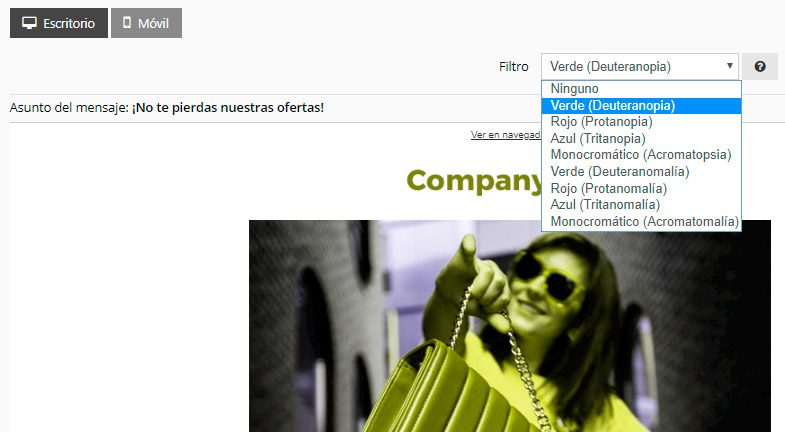
Next, we explain briefly how it alters the perception of color each of the types of color blindness.
Deuteranopia. Red-Green Color Blindness
Deuteranopia / deuteranomaly is the most common type of color blindness.
The retinal cones responsible for the reception of light with medium-wavelength (corresponding to the color green) are absent or not functional (deuteranomaly) in people who suffer from it.
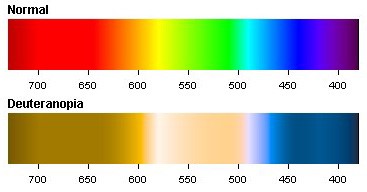
This means that they have problems when discriminating between green and red, being able to distinguish only from 2 to 3 different hues, whereas somebody with normal vision sees 7 different hues.
The perception of color is very similar to that of people with protanopia, but the color red does not see it as dark.
People with deuteranomaly (also called green-weak) on their part, often can distinguish between red and green, although they do not perceive these colors in the same way as a person who is not colorblind.

Protanopia. Red-Green Color Blindness
People with protanopia have long-wavelength (red) cones defective (protanomaly) or missing at all.
This not only means that they have difficulty distinguishing between red and green colors but also between blue and green.
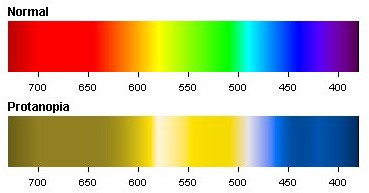
In this case, the reds look more beige and darker than they really are. The greens on your part resemble the red ones.
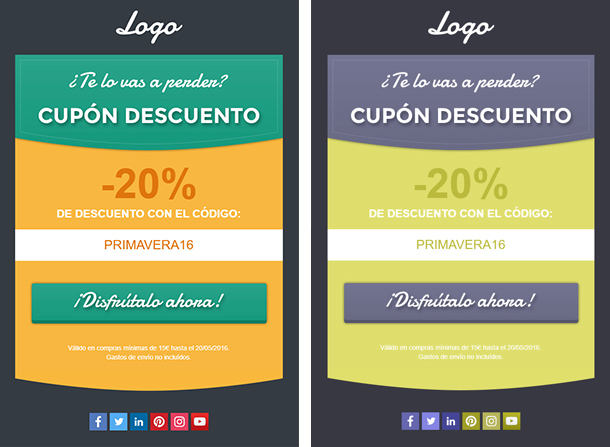
Tritanopia. Blue-Yellow Color Blindness
People affected by tritanopia have cones of short-wavelength (blue) defective (tritanomaly) or are missing at all. In this case they confuse blue with green and yellow with violet.
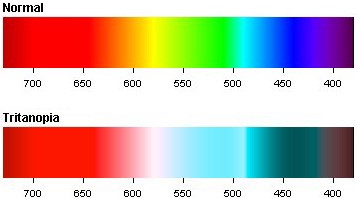
Blue-yellow color blindness can be observed only very rarely, one out of 10.000 persons is affected at most.

Monochromacy. Complete Color Blindness
If you are suffering under monochromacy you perceive all colors in shades of gray, which causes you to confuse green and blue, red and black, and yellow and white.

This type of color blindness is rare and people who suffer from it have many difficulties to accomplish a many everyday tasks, because colors are such a central part of our life.
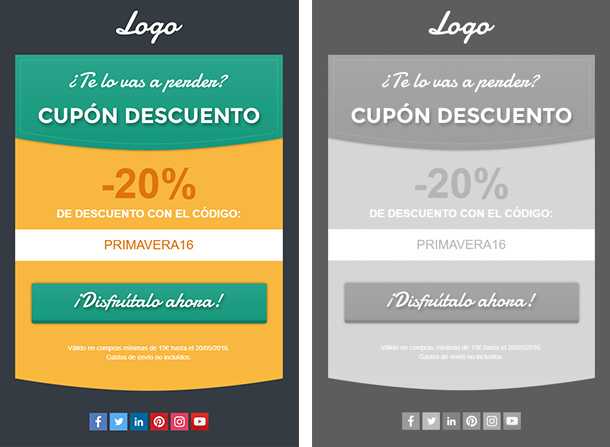
Do not miss anything from our blog and join our Telegram https://t.me/acrelianews
Haven't you tried Acrelia News yet?
If you like this post, you will like much more our email marketing tool: professional, easy to use.